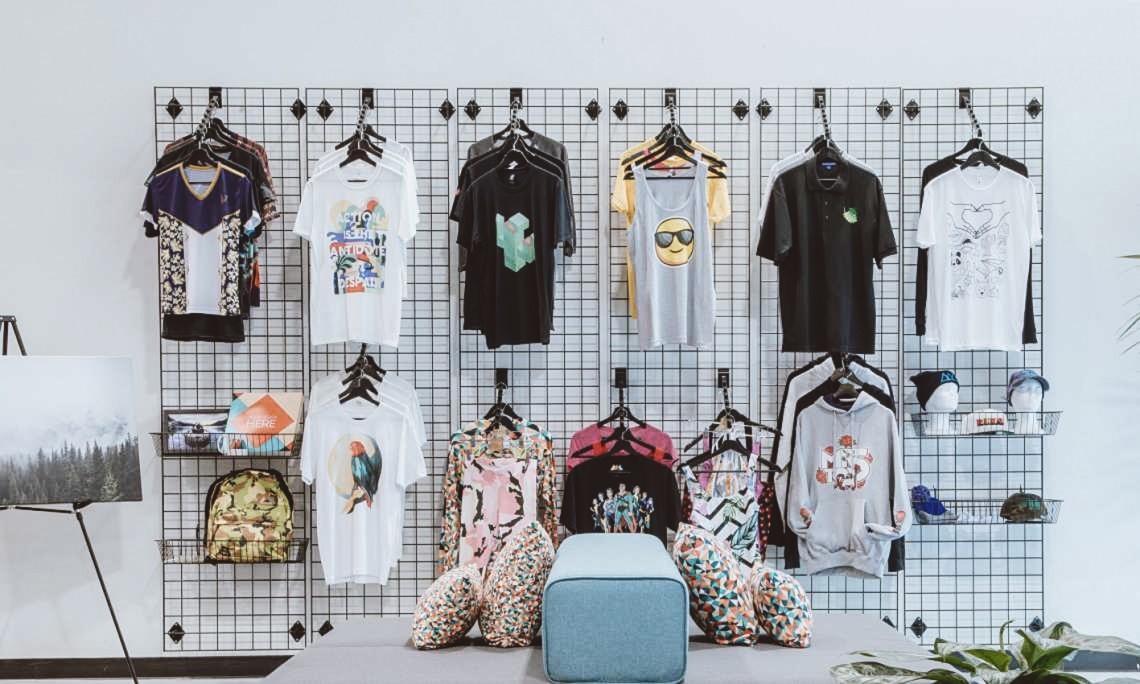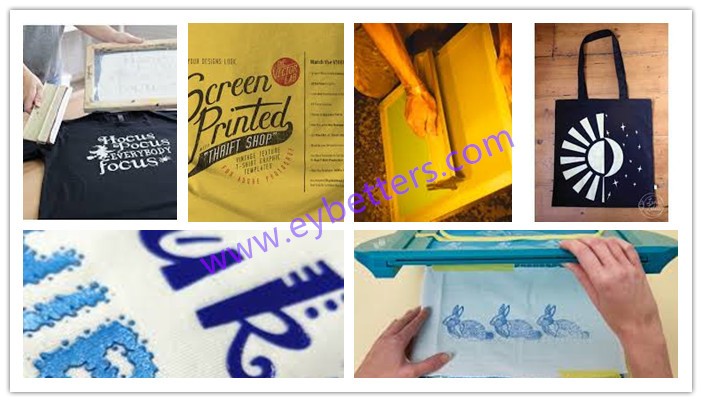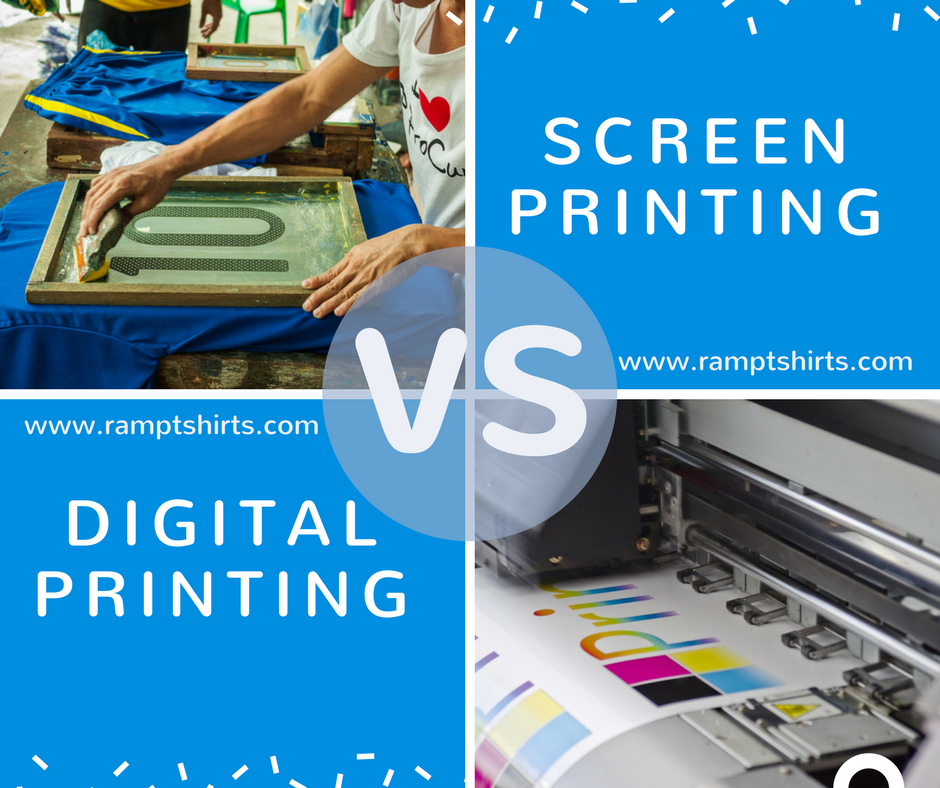Not known Details About Tx Tees
Not known Details About Tx Tees
Blog Article
Indicators on Tx Tees You Should Know
Table of ContentsTx Tees - QuestionsTx Tees - The FactsThings about Tx TeesThe Best Strategy To Use For Tx TeesFascination About Tx TeesThe 30-Second Trick For Tx TeesGetting My Tx Tees To Work
That brings your total amount to around $1,900 before tax and delivery. Accumulate other prices, like the variety of utilities it takes to run the store and the cost of ink and emulsion per layout. custom cap printing. Take the print listed below. This is a one-color photo, so the cost of ink per shirt is about 20 cents.The solution should only be a few cents considering that you 'd only need to coat one display for this job. Exactly how much should you bill per t shirt to make a profit? Typically, printers try to make up to 45% revenue on a print work. Below's a table to help you figure out that: complete price per thing percent of desired profit as a decimal (example:.25 or.45) revenue made per product per task Currently allowed's talk concerning the profitability of DTF.

With DTF, you can print a handful of tee shirts, or just one. Both display printing and DTF have their specific niches in the world.
Rumored Buzz on Tx Tees
The very best means to know? Ask about and see what print shops like yours are doing. custom cap printing. Try both out and see which you like much better
When you're picking what kind of printing approach to make use of for publishing your artwork layouts on your garments, it is essential that you understand the differences between these 2 methods so you can make best use of outcomes while minimizing costs. Display printing is the most typically used method for publishing designs on fabrics.
DTG printing is likewise referred to as area or direct to garment printing since it publishes only what is required rather than making a display as screen printers do. https://txtees02.bandcamp.com/album/tx-tees. Display printing functions by display filler squeegee display printing ink screen mesh display, after that transferring the image to garment utilizing warmth and/or pressure
The DTG printer utilizes unique dye-sublimation inks that are applied right into a pre-designed image by an electronic printing system. The inks end up being component of the fabric, permitting lively colors and exceptional information. It's additionally referred to as spot or direct to garment printing due to the fact that it publishes only what is needed instead of making a display as display printers do.
The Definitive Guide to Tx Tees
It's much quicker - you can publish a fullcolor picture in minutes, as opposed to hours for screen printing. Second, there's no set up time or prices entailed - you can publish any layout you such as, without needing to create a display initially. Third, there's no waste - because screen printers display print one style at a time, they need to screen each color separately.
The paper is really costly and can only be used once. Once it's printed on, it needs to be discarded. - The preliminary acquisition cost is reduced than the in advance financial investment of DTG printers- You can print multi-color designs one display at a time rather than having to publish each shade independently like DTG printing.

7 Easy Facts About Tx Tees Shown
Instead of using display mesh as screen printers do, dye sublimation printers make use of laser innovation to move your images onto garments or paper. A heat procedure moves the dye from its solid-state straight into the gas phase which in turn integrates it onto fabric substratums when they are rapidly heated up to high temperature levels under high stress.
Sublimation printing is environment-friendly. It makes use of less water than screenprinting, and due to the fact that it does not entail using dangerous solvents, it's risk-free for all kinds of clothing. The dye sublimation inks are additionally odorless when treated, unlike display printers that make use of harmful chemicals during the screen printing process that leave behind an unpleasant odor.
They likewise save cash on pricey tools like direct exposure devices since dye sublimation printers don't require a UV exposure unit or a flash remedy oven that is normally utilized in screen printing (custom cap printing). What is direct to garment printing (DTG Printing)? DTG printing is a digital screenprinting process that prints straight onto material making use of specialized inkjet printers
The Facts About Tx Tees Uncovered
DTG printing uses numerous benefits over typical screenprinting, consisting of the capacity to print photo high quality pictures, higher color vibrancy, and the capacity to publish designs on darker textiles. DTG printers work by heating the fabric ink till it becomes a gas. The gas after that permeates the textile, bonding with the fibers to produce an irreversible print.

Screen printers simply prepare their display then begin publishing till they lack item or ink.- There is a variety of experienced screen printers throughout the globe, which can be handy for beginners. - It's a slower process - display printers often need to await the ink to dry prior to they can publish the next color- Display printers call for manual work, so there's a higher knowing curve and it takes longer to generate a high-grade layout- Screen printing isn't as exact as DTG printing, so you might get some "bleeding" of shades from one component of the photo onto an additional if not done correctly.
6 Easy Facts About Tx Tees Shown
Nevertheless, rather than utilizing display mesh as screen printers do, dye sublimation printers make use of laser innovation to transfer your pictures onto garments or paper. A warmth process moves the dye from its solid-state directly right into the gas stage which consequently integrates it onto fabric substratums when they are swiftly heated to heats under high stress.
Sublimation printing is green. It uses less water than screenprinting, and due to the fact that it doesn't entail making use of dangerous solvents, it's safe for all types of clothing. The color sublimation inks are also click here for info odor free when healed, unlike display printers that use damaging chemicals during the display printing procedure that leave behind an unpleasant odor.
They likewise save money on expensive tools like direct exposure units because color sublimation printers do not require a UV direct exposure device or a flash treatment stove that is usually used in screen printing. What is direct to garment printing (DTG Printing)? DTG printing is an electronic screenprinting procedure that prints straight onto textile making use of specialized inkjet printers.
Examine This Report on Tx Tees
DTG printing uses lots of advantages over conventional screenprinting, consisting of the capacity to publish photographic high quality images, greater color vibrancy, and the capability to print designs on darker textiles. DTG printers function by heating up the textile ink up until it transforms into a gas. The gas then permeates the fabric, bonding with the fibers to develop a long-term print.
Report this page